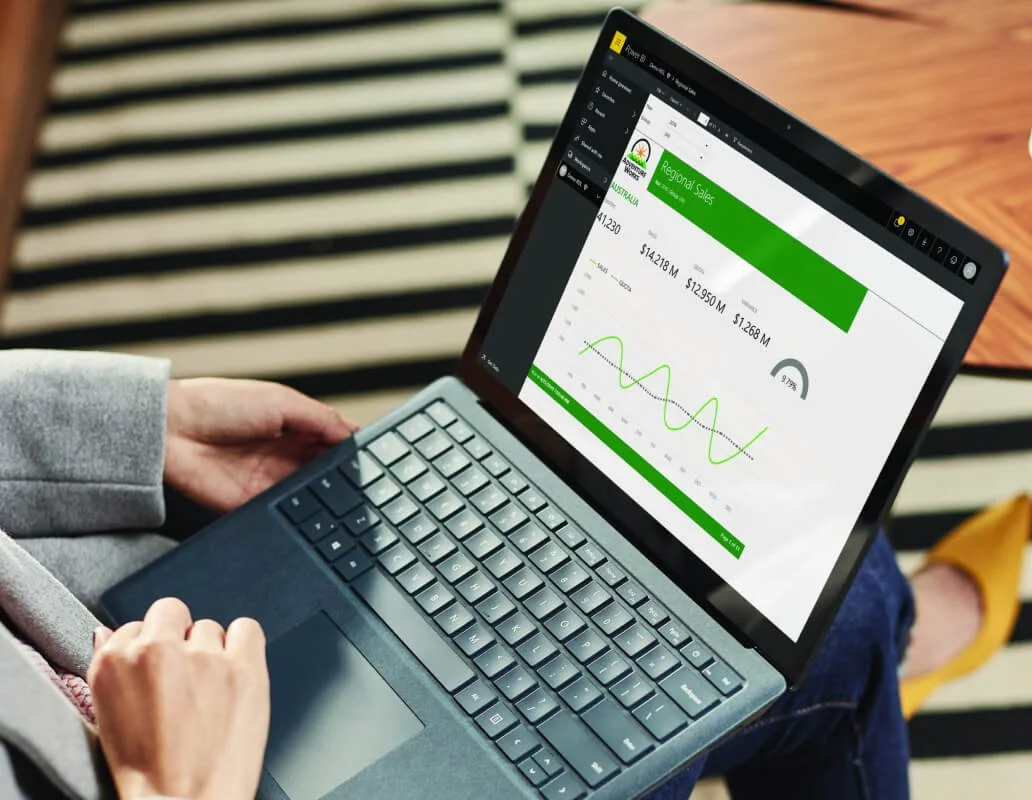Introduction: In the fast-paced world of sales, staying ahead requires real-time insights and strategic decision-making. Microsoft Power BI, a powerful business intelligence tool, empowers sales teams with intuitive and visually compelling dashboards. This article delves into examples of sales dashboards created using Power BI, showcasing how businesses leverage this tool to monitor key performance indicators (KPIs), track sales trends, and drive revenue growth.
Overview of Power BI for Sales Dashboards:
Dynamic Data Visualization:
Power BI enables dynamic and interactive visualizations that transform raw sales data into actionable insights.
Dashboards are customizable, allowing sales teams to focus on the metrics most relevant to their goals.
Real-Time Analytics:
Power BI connects to various data sources, providing real-time analytics on sales performance.
Live data refreshes ensure that sales teams have the most up-to-date information at their fingertips.
Key Components of Power BI Sales Dashboards:
Sales Performance Metrics:
Dashboards typically include key metrics such as total sales, revenue growth, and sales pipeline.
Visualizations like line charts and gauges provide an instant overview of performance against targets.
Customer Relationship Management (CRM) Integration:
Power BI integrates seamlessly with popular CRM systems like Salesforce and Dynamics 365.
Dashboards can display customer interactions, lead conversion rates, and customer segmentation.
Product and SKU Analysis:
Analyzing product and SKU performance is critical for sales teams.
Power BI allows for detailed product analysis, showcasing top-selling products, inventory levels, and revenue by product category.
Geospatial Visualizations:
Geographic maps provide insights into regional sales performance.
Heat maps or bubble maps can highlight areas with the highest sales, enabling targeted marketing and sales strategies.
Sales Funnel and Conversion Rates:
Visualizing the sales funnel helps track leads through various stages of the sales process.
Conversion rate visualizations provide insights into the efficiency of the sales pipeline.
Power BI Sales Dashboard Examples:
Revenue Dashboard:
Visualizations include a line chart depicting monthly revenue trends, a KPI card for total revenue, and a donut chart showcasing revenue distribution by product category.
Sales Performance Overview:
A comprehensive dashboard with a sales performance scorecard, regional maps showing sales distribution, and a bubble chart representing sales by product and region.
Customer Segmentation Dashboard:
Utilizing demographic data for customer segmentation, this dashboard includes visuals like bar charts and pie charts to represent customer segments and their contribution to overall sales.
Opportunity Analysis Dashboard:
Focused on the sales pipeline, this dashboard displays a sales funnel, conversion rates, and a detailed breakdown of opportunities at different stages.
Sales Rep Performance Dashboard:
Individualized dashboards for sales representatives, featuring metrics like sales targets, actual sales, and a leaderboard showcasing top performers.
IV. Benefits of Power BI Sales Dashboards:
Improved Decision-Making:
Sales teams can make data-driven decisions with real-time insights at their disposal.
Identifying trends and patterns enables proactive strategies for revenue growth.
Efficient Sales Pipeline Management:
Visualizing the sales pipeline enhances efficiency in managing leads and opportunities.
Sales reps can prioritize efforts based on the most promising leads.
Enhanced Collaboration:
Power BI dashboards facilitate collaboration by providing a centralized platform for sharing insights.
Sales teams, managers, and executives can align their efforts based on a common understanding of sales performance.
Goal Tracking and Accountability:
Setting and tracking sales goals becomes more transparent and measurable.
Accountability is enhanced as teams can visualize progress towards targets.
Future Trends and Innovations:
Artificial Intelligence Integration:
AI-powered insights can provide predictive analytics and recommendations for sales strategies.
Automated anomaly detection and forecasting contribute to more accurate planning.
Mobile and Embedded Analytics:
Mobile access to Power BI dashboards ensures that sales teams can access critical information on the go.
Embedded analytics in CRM platforms further streamline the integration of Power BI into daily sales workflows.
Conclusion: Power BI sales dashboards have become indispensable tools for organizations aiming to thrive in the competitive landscape of sales. By harnessing the capabilities of Power BI, businesses can transform raw data into actionable insights, enabling strategic decision-making, and ultimately driving revenue growth. As the integration of advanced analytics and artificial intelligence continues to evolve, the future of Power BI in sales promises even greater innovation and efficiency, solidifying its position as a key asset for sales teams worldwide.
check out our site for more details: -
Analytics Companies in Australia
Data Analytics Consulting Services







Comments